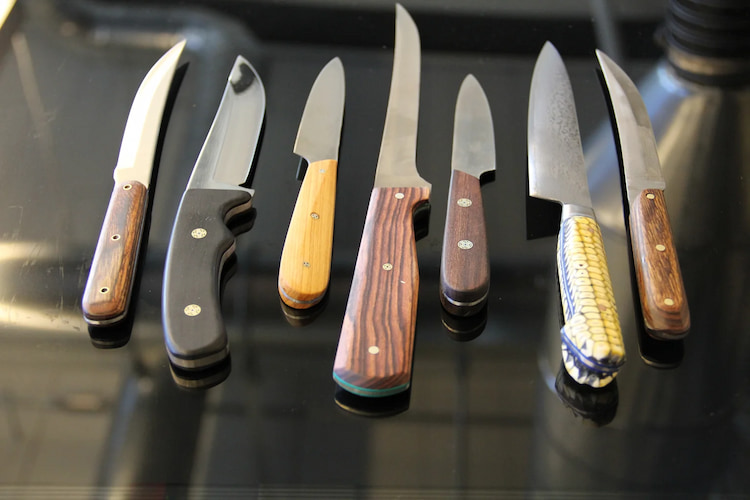No matter whether you’re an experienced cook or are just starting out, having a good set of knives can be a huge difference maker in how much you enjoy your cooking. Having the right blades that are sharp, comfortable and well-balanced can make cooking much more enjoyable and easier. And while you can get a knife set for as little as $20, most quality sets range anywhere between $100 and $200. The more expensive models, which are typically handmade can cost up to $2000! While you probably won’t need a top-of-the-line knife if you’re just starting out, a professional cook knows that money spent on an Australian knife set that’s made to last can be worth every cent. That being said, here’s what to consider when buying a knife set as a beginner.
Things to Consider When Buying a Kitchen Knife
There are many things to consider when buying an Australian knife set, but comfort is the number one priority, as the knife should feel and act as an extension of your hand. If possible, always try the knife out before buying one – the knife should cut through everything easily without resistance. And contrary to popular belief, a sharp knife is, in fact, a safe knife, not the other way around.
Materials
Knives are typically made of stainless steel, ceramic, carbon steel and Damascus steel.
Stainless steel is the most common material, as it’s rust-resistant and easy to sharpen. On the downside, they’re prone to bending, flexing and going blunt rather quickly, as stainless steel is softer than the other metals mentioned here.
Carbon steel is another popular material used for manufacturing knives. Carbon stays sharp for very long, but it’s prone to rust. You can season it with mineral oil to prevent this, but it means that you’ll have to put more effort into taking and maintaining it. If you’re serious about cooking and aren’t on a tight budget, a carbon steel knife is the way to go.

source: materialkitchen.com
Ceramic knives are lightweight and extremely sharp. They’re also affordable and don’t rust. They don’t need to be sharpened, but are prone to chipping. Ceramic knives are difficult to maintain at home, as they require a diamond sharpener, so you might have to send them back to the vendor for sharpening.
Damascus steel knives feature a carbon steel core and a stainless steel exterior. They’re characterised by their striking designs along the blades, and they can get quite pricey. Damascus steel knives are typically handmade, meaning they’re more expensive. Some steel knives are coated to look like Damascus knives, so be wary.
Tang
This refers to the unsharpened and unexposed part of the blade that goes all the way down to the handle. There are three fang types – full-tang, rat-tail tang and half-tang.
Full-tang knives have the blade going down the entire length of the handle. In some blades, this is visible and fastened by rivets. Full-tang knives are the best choice, as they provide better balance and are more robust. It also means there’s virtually no chance of the handle becoming loose from the knife blade.

source: themanual.com
Rat-tail tang knives have the blade narrowing as it goes through the handle. The blade is typically welded at the base. These knives can come loose over time, making the handle feel wobbly.
Half-tang knives have the blade extending halfway along the handle. If you apply too much force, the knife can snap, as the handle and blade are only held by glue.
Weight and Comfort
These two factors come down to personal preference. There’s no ideal weight or grip. Most professional cooks agree that a knife should have some weight behind it, but it should be too heavy to strain your hands. For comfort, some knives feature rubberised handles for extra grip, while others are moulded to fit the contours of your hand. Some advanced knives combine both features. Make sure the handle doesn’t have sharp or angular edges that form pressure points in your hand. Some handles come with smooth bolsters that allow your forefinger to rest comfortably.
Handle Type

source: unsplash.com
Knife handles are made of either plastic or wood. Plastic handles are smoother and don’t have grooves that can trap dirt. Some plastic handles are made slightly textured to provide a better grip. However, they don’t fare well against heat so keep them away from heat sources to avoid melting the handle. Wooden handles, on the other hand, might require oiling with special handle oil. Most wooden-handled knives come with a plastic coating for extra protection and to prevent trapping dirt in the grooves.
Left-Handed Knives
Most knives are designed for both right- and left-handed users, as they’re made with a double bevel that makes both sides sharp and angular. Some knives, however, such as bread knives, feature a single bevel, which means the blade is only sharp on the right-hand side. There are generally sections for left-handed users in specialised knife shops, which is where you’ll find knives made for left-handed people.

